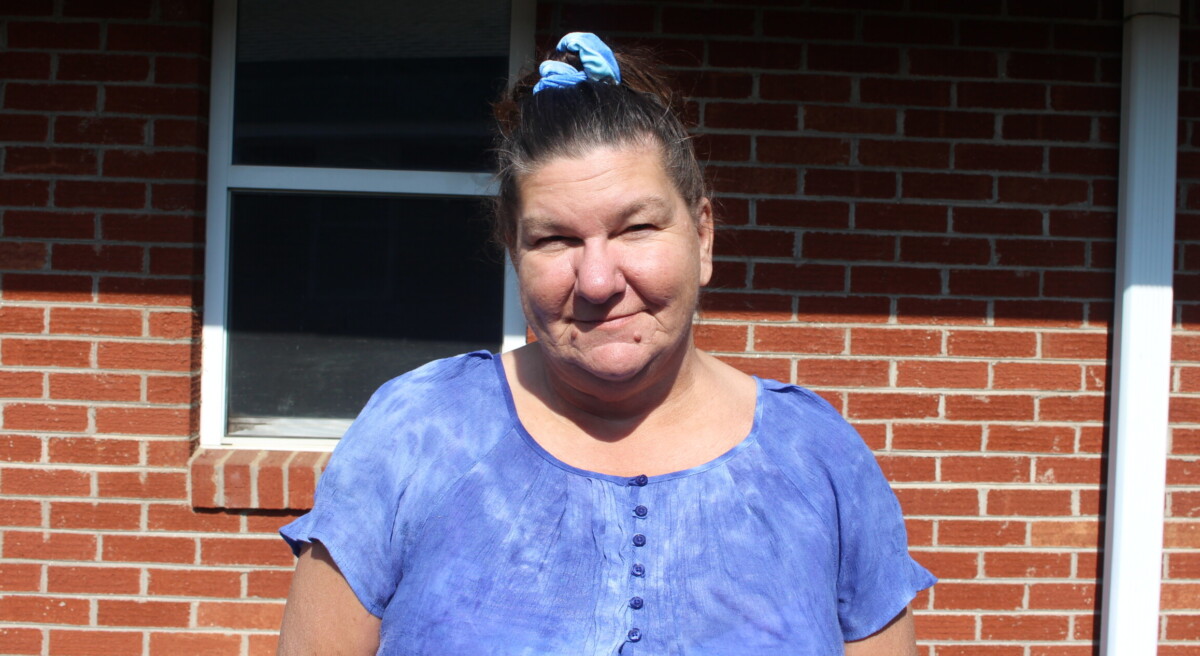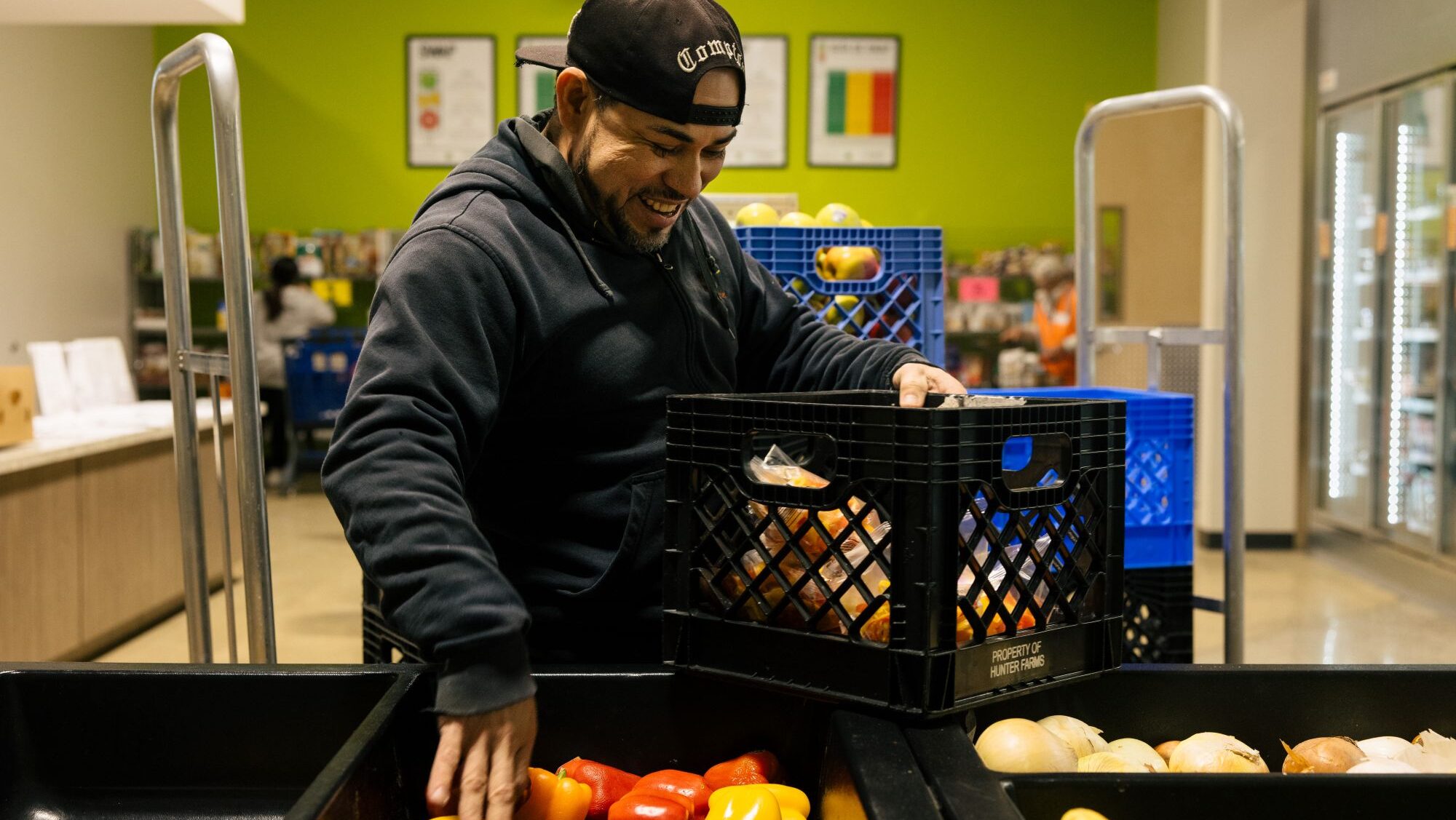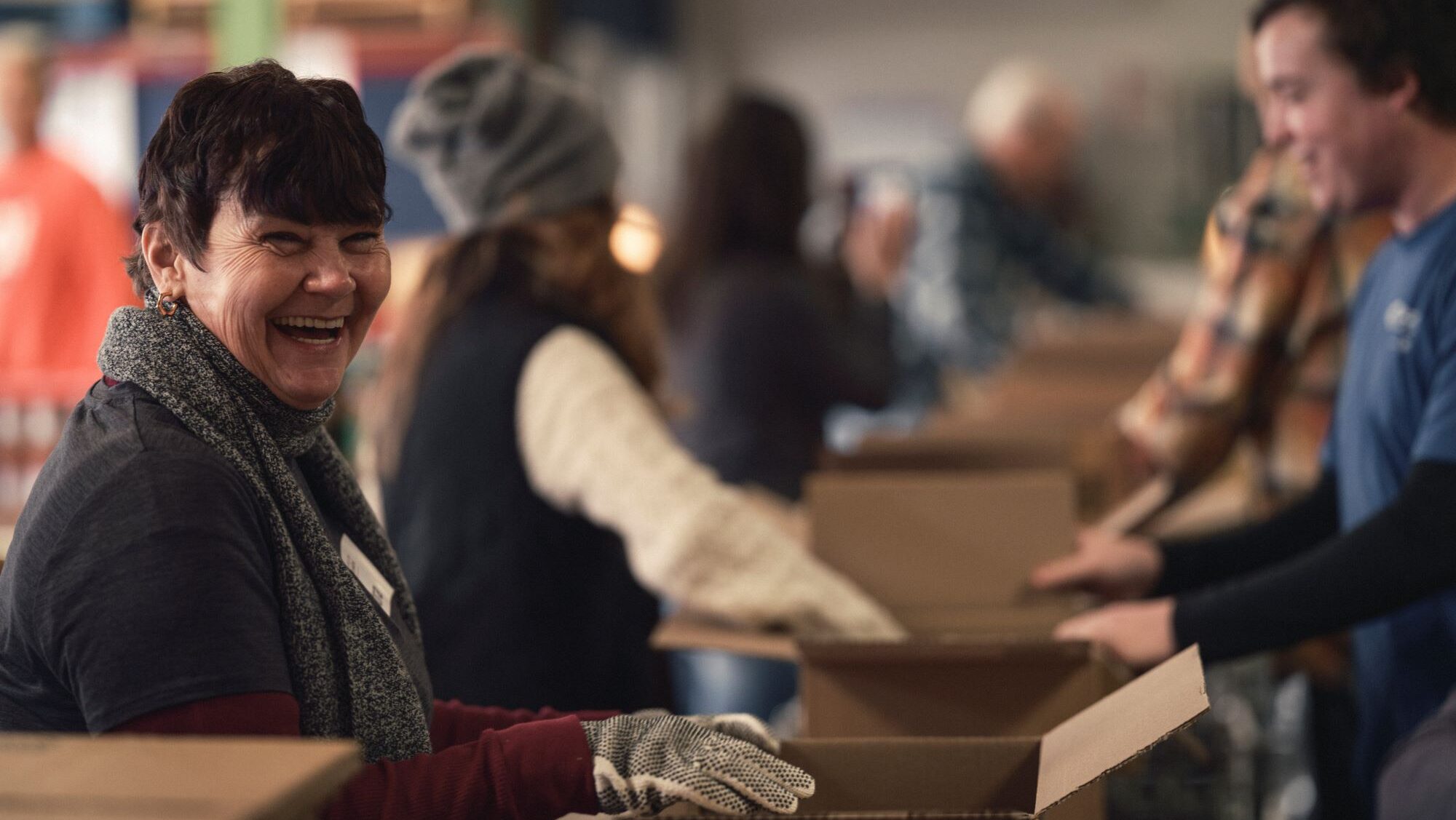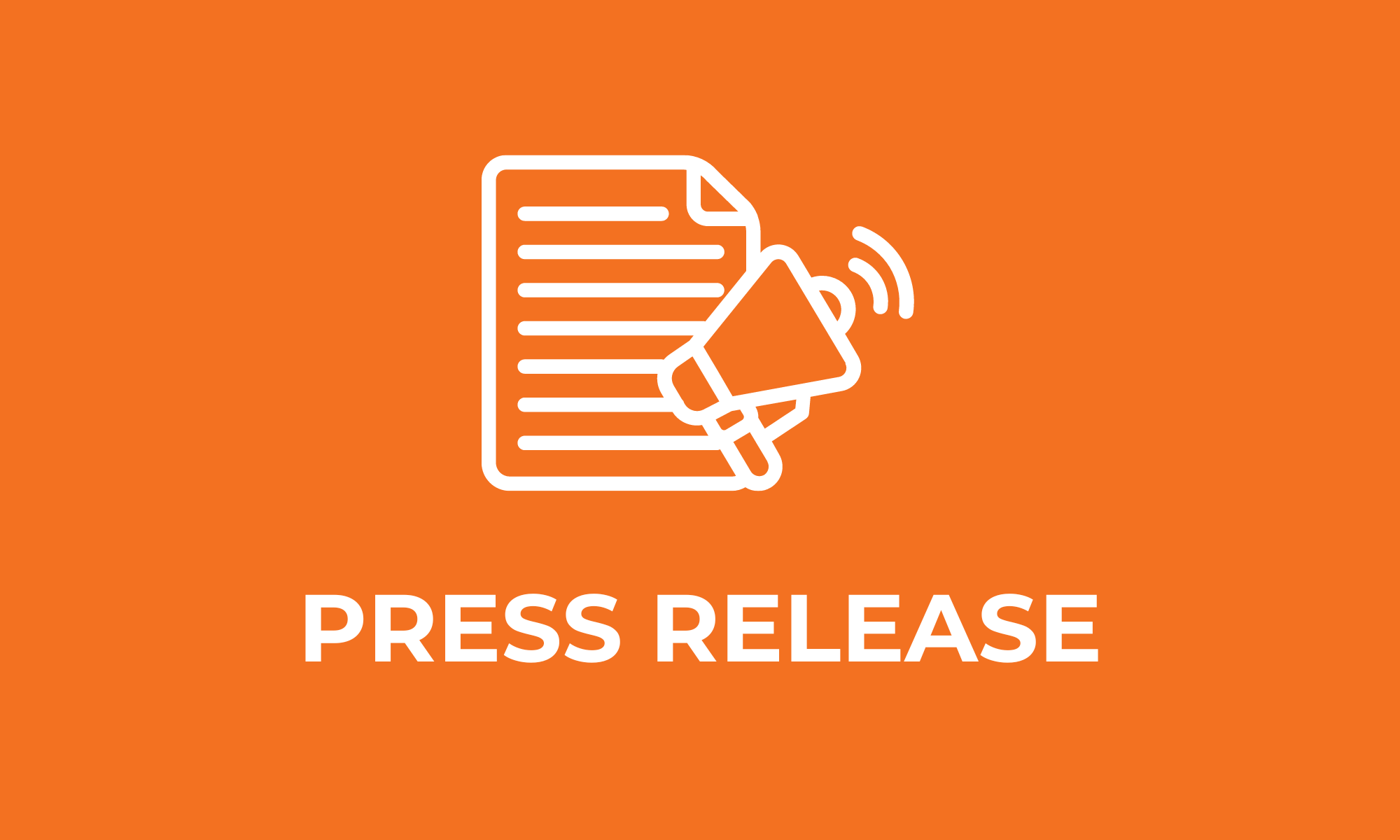Imagine what your neighborhood would be like if every child, every mother, every father, every senior, everyone has the food they need to support their health and well-being.
This vision is possible! Together, we’re already making life better for the children, seniors, families, and hard-working individuals in central and western Virginia who do not have the food they need to live active, healthy lives. Take Cindy (above), for example, who is receiving food and so much more from our network. A grandmother raising 6 grandkids, Cindy says, “The food is great! But it’s the people (at the pantry) … they just make you feel like family here. They make me feel loved and they help me. I couldn’t make it without them.”
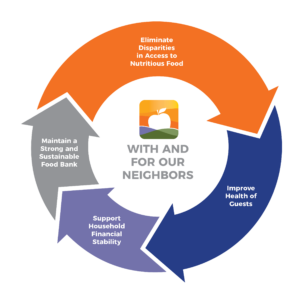
A renewed vision for the future
Every day, food bankers witness the very best in humanity—generous people show up to help other people who are having a tough time making ends meet.
Every day, we hear gratitude from guests. They are thankful for nutritious food, for the knowledge that someone cares, and for the hope of a better day to come.
But, despite the Food Bank distributing more food than ever in our 42-year history, hunger is still a reality for many living in the Blue Ridge region.
For deeper impact, we have set a new strategic direction, with and for our neighbors at the center of everything.
Below, learn more about our strategic goals and meet some of the people we’re helping, together.
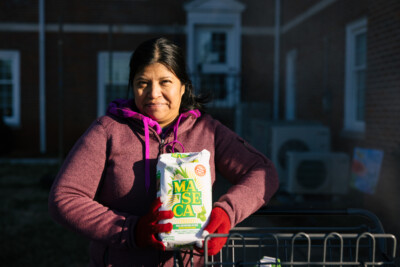
Amalia, mother, wife, and native of Guatemala says her family loves the traditional Guatemalan recipes she makes with the meat, fresh vegetables and fruits they receive at the distributions. Though the family works in landscaping, their income is not always enough to cover their bills. Amalia said she’s grateful that the distribution can help cover the gaps.
Goal: Eliminate disparities in access to nutritious food
Food distribution will continue to be a large part of what we do. And we’re more focused than ever (after extensive research this past year) on finding ways to help guests overcome barriers to accessing services–from transportation to language to stigma.
Our core strategy to tackle this goal is to strengthen and diversify our partnerships. We will continue to tap non-traditional organizations to join our 400+ partner-strong network and develop innovative food distribution models to reach underserved people, no matter who they are or where they live. We’re bringing food to schools, neighborhoods, health clinics, pantries, community centers and more.`
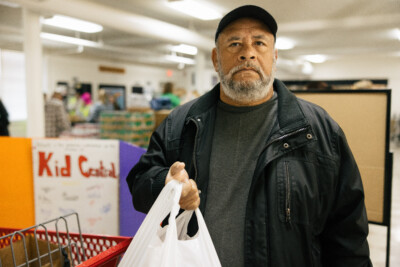
Cletus is retired. He can’t choose between food and medicine because as he says, “You gotta have the medicine.” For him it’s insulin. He is grateful for the nutritious food he receives from his local pantry—items like green beans, corn, peaches, and frozen meats.
Goal: Improve the health of guests
Quite simply, food is health. Our core strategy to drive improved health outcomes is to prioritize access to nutritious and desirable foods. Half of the Food Bank’s guests report that someone at home has special dietary requirements because of their health.
For us, this means sourcing nutrient-dense and culturally familiar foods that people want to eat and enjoy together as a community. This means helping our pantry network—especially those who opt to join the Healthy Pantry Initiative—gain resources to support more health-focused and neighbor-centered practices. This means providing medically tailored foods to patients in clinics through our Food Pharmacy program. And so much more!
We don’t do this work alone—we are participating in statewide food security and health equity collaborations.
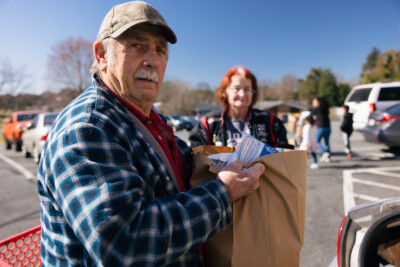
Ronald, a senior sharing his housing with family members, says, “The hardest thing about the whole situation (rising costs) is for 40 some years I worked, provided—and now I can’t. If I could, I would be working.” What does this pantry mean to them? “We eat.”
Goal: Support household financial stability (through connection to other resources)
While food distribution has been and continues to be central to what the Food Bank does, we know our work alone will not end food insecurity. The truth is, food insecurity isn’t about food, it’s about income. The families struggling with food security are almost always struggling with other expenses as well. We can do more to help so they don’t have to choose between buying groceries and paying for other necessities.
We can connect neighbors with other resources that support food security and health to make more lasting change for our neighbors. Because fewer than one-third of guest households use SNAP (Supplemental Nutrition Assistance Program), we are improving our ability to help people apply for SNAP benefits. And we’ll continue to advocate for stronger government programs that help neighbors with the greatest need.
Goal: Maintain a strong and sustainable organization
The Food Bank and our partners operate with great efficiency and effectiveness. But to grow our impact, this plan’s success will require continued investment in data and insights, human resources, communications, infrastructure, revenue, and equipment.
Measuring impact
To ensure our work is moving the community closer toward our shared vision, we’ll ask guests and partners to tell us how we’re doing in meeting their needs.
Do they have access to food when they need it? Over time, we should see reports that more guests say “yes.” If not, we will dig in to better understand the challenges and supports needed.
Are we providing the foods that guests need to meet their health, cultural, and religious needs? Even nutritious food isn’t healthy unless it is eaten, so there are many variables for us to track to ensure that our inventory matches what our guests can consume.
You are part of this plan!
The Food Bank does not and cannot do this work alone. Whether you’ve been or are a guest, a volunteer, a partner, a donor, a staff member, an advocate, or some combination of these roles, we’re glad you are part of our community.
Thank you for standing with us to realize a better future for everyone. Learn more about the research driving the plan.
 Chew On This
Chew On This
